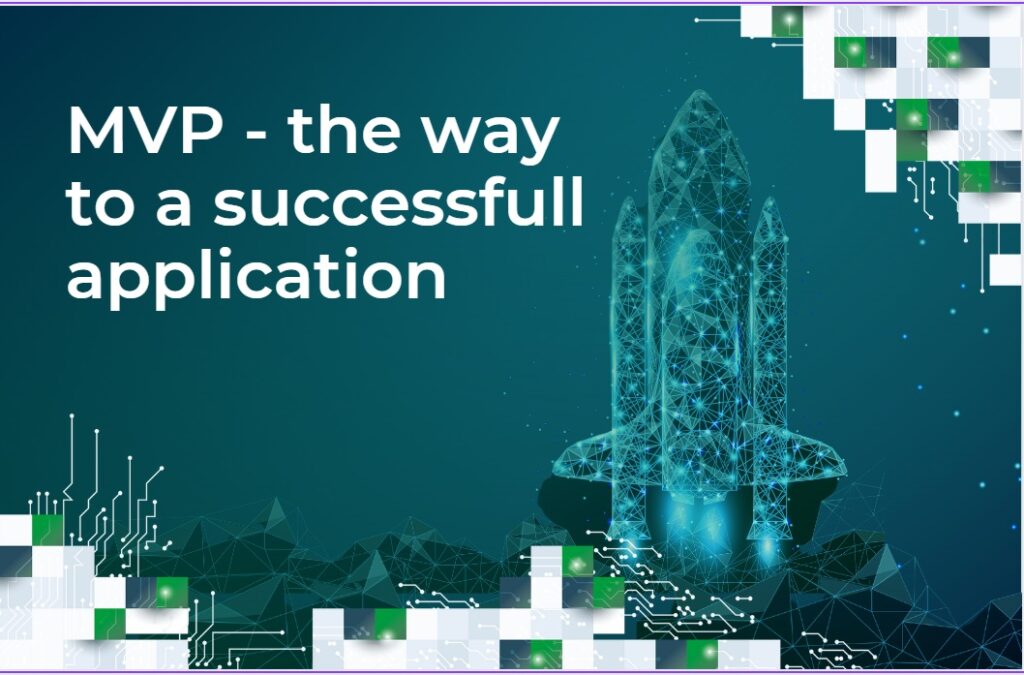Minimum Viable Product (MVP) is a method of creating digital products by which solutions, with only basic functionalities, can be quickly validated by the market. What do you gain by making an MVP? Reduced costs and workload, as well as rapid verification of product potential.
What is MVP?
Lean startup methodology creator Eric Ries came up with a definition for MVP that is closest to reality. Using MVP, he said, “you can gather the maximum amount of validated customer knowledge with the least amount of team effort.” The largest and most well-known digital products, such as Facebook, Twitter, and Discord, were created this way.
It is the market that determines the direction of IT projects developed according to this model. Hence, this is one of the best methods for verifying our own ideas and juxtaposing them with the actual needs of users. As a result, we can continue developing based on facts rather than assumptions or concepts.
The 4 stages of using the MVP methodology in IT projects
How do you approach the creation of a product MVP? The process can be divided into 4 stages:
1. Preparation of the project and its assumptions
The main challenge when creating an MVP is to determine with which core functions it will be equipped. This is by far the most important step in the entire application development process. The subsequent success of the application depends on what features are made available to users at an early stage.
An in-depth market analysis should precede this stage. When developing the MVP concept, the focus should not be on attempting to monetize it! An emphasis should be placed on scalability and testing the application’s potential.
Bear in mind that the MVP is not the final version of the product. Take this into account right from the technical documentation stage. Don’t go into planning too many features, as feedback from the market will determine the further development path of the application.
If you’re unable to define a set of necessary functionalities clearly, think about creating a few MVP prototypes, the value of which will be reviewed by A/B testing.
2. Project prototype
The next step will be to draft a design prototype after defining the functions. It is common to use UX/UI mockups or user stories at this stage. We can move from conceptual work directly to coding in certain instances, while correctly carried out preparation and design stages allow you to estimate development costs with a high degree of certainty.
3. Development
Typically the most costly stage of the whole process. To carry it out, you will need a programmer experienced in MVP development or, if the product is complex, a whole team.
Keep in mind that the MVP model is not only a planning and prototyping method but also a programming one. The application’s code should be simple, and its architecture should be designed to have as few ‘moving’ components as possible so that it is easier to add new features after feedback is gathered.
4. PIVOT
Once the MVP is ready, it is time to validate your project on the market. It is at this stage that the first users have the possibility to get acquainted with your product, and their behavior will determine its further development.
During this step, it will become clear whether your idea has a chance of success and if it is worth advancing with it.
How do you choose the best technology partner to create an MVP?
Do you want to create a digital product but are not sure how to verify whether the company you intend to work with is competent? At this stage, you should pay attention first and foremost to:
- Portfolio – the basic thing is to check whether the software house has experience in creating application MVPs.
- Clients’ references – ask for references from previous projects. It may be worth talking to their authors and finding out first-hand how the collaboration actually went.
- Experienced staff – verify the experience of the developers, e.g., by checking the company on LinkedIn.
If you already have an initial outline for a mobile app, web app, or digital service and are looking for an experienced technology partner, check out the projects we have completed with clients who needed custom software.
If you have a ready-made action plan and description of your application, we will prepare a quote for you in as little as 24 hours after you send us your specifications. If not – get in touch and arrange a free consultation on solwit.com to discuss your idea and develop a further action plan together.
